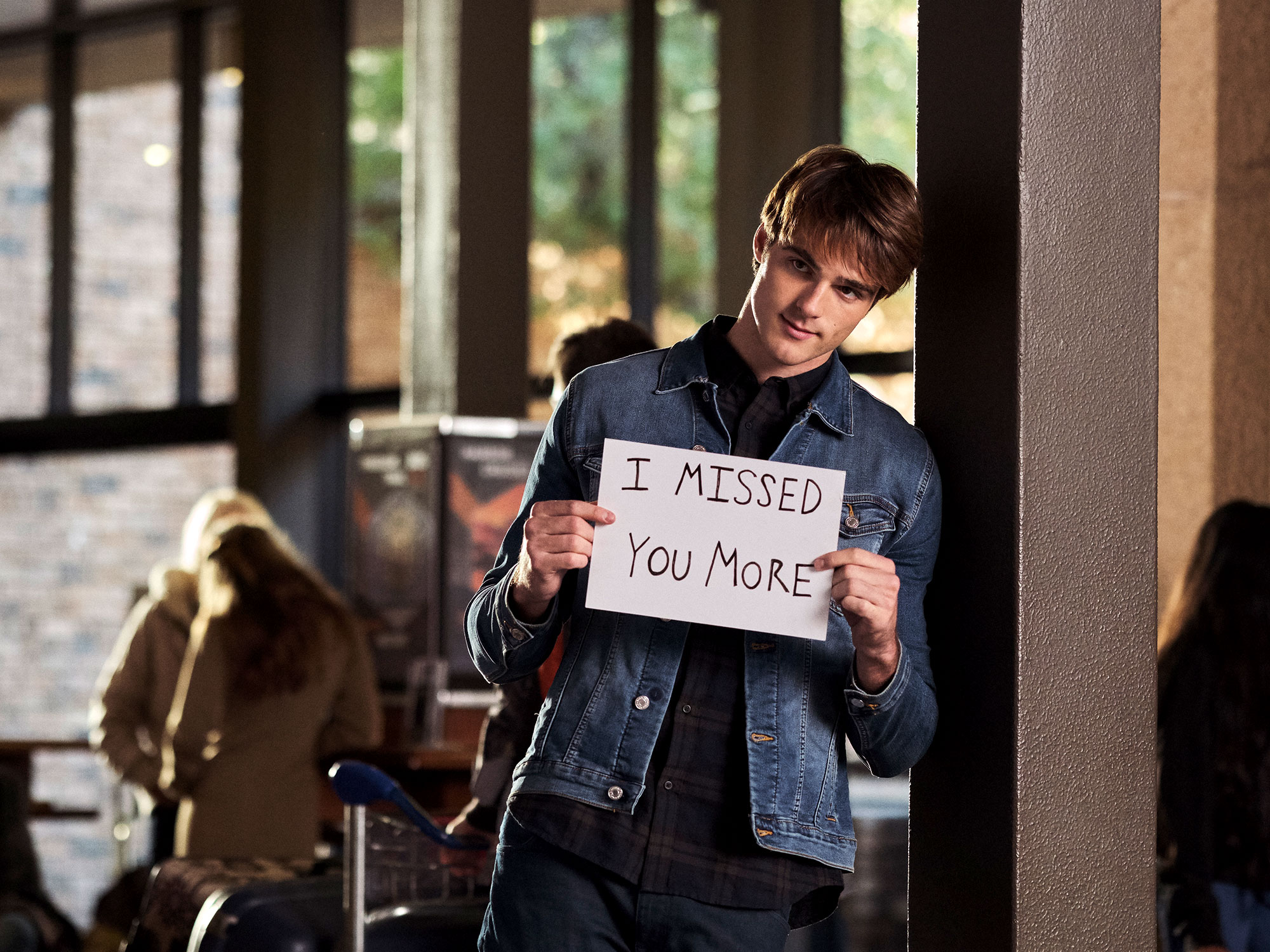Why does the white boy always get the girl in Netflix rom-coms?

To All The Boys I’ve Loved Before and The Kissing Booth are two of Netflix’s most popular young adult franchises, having already spawned multiple sequels (the third instalments are slated for the near future). As with the majority of American high school movies, both are replete with mean girls, bad boys, misfit best friends, clandestine romances and college applications – and both revolve around typical teen girls who have a crush on the school heartthrob, who happens to be out of her league and also happens to be white.
In both cases, the female protagonist also experiences a happy ending with said heartthrob. When it comes to the sequels, a love triangle is introduced as a means to advance the storyline. In To All the Boys: P.S. I Still Love You, Lara Jean (Lana Condor) finds herself volunteering at the same retirement home as her middle school flame John Ambrose (Jordan Fisher), one of the boys that received a love letter from her in the first movie.
Since this is an adaptation, this development could just be the result of the screenwriters being faithful to the source material – but the same logic doesn’t apply to the casting. In the book, John Ambrose is described as a blonde-haired, blue-eyed Caucasian with rosy cheeks, akin to a young Robert Redford. In the original film, we get a glimpse of an older and younger John Ambrose, played by Jordan Burtchett and another white actor, Pavel Piddocke, respectively. But in the sequel, it’s the multi-ethnic Jordan Fisher who stars in the role.

Meanwhile, The Kissing Booth 2 takes it up a notch by introducing two characters to augment the troubled long-distance relationship storyline. Sparks fly between Elle (Joey King) and her dance partner Marco (Taylor Zakhar Perez), who is helping her win a contest to fund college. At the same time, she worries that Noah (Jacob Elordi) is cheating on her with fellow Harvard freshman Chloe (Maisie Richardson-Sellers), a sophisticated Black woman with a British accent.
Coincidentally, both of the “other” people in the love triangles are PoC. The reason behind recasting John Ambrose as an African-American is unclear, and neither is Perez’s hypersexualised characterisation as Marco. Could it be that audiences are more comfortable watching PoC in the limited capacity of fleeting attractions rather than potential love interests?
In addition to their obvious attractiveness, John Ambrose and Marco are nice to a fault. None of this seems to matter to our heroines, who – after one heated kiss – predictably go back to their boyfriends, however problematic or insecure their relationships with them are. Although young love may be blind, the casting for these movies wasn’t. It’s clear that these men of colour are only introduced as a distraction, while the white boy inevitably gets the girl with minimal effort – he just needs to show up.
For people of colour, navigating pop culture means encountering a barrage of microaggressions and seeing yourself represented as an exotic afterthought certainly doesn’t help matters. Intentional or not, Netflix seems to have tokenised these men of colour. This trend extends to Netflix Original TV shows like Never Have I Ever, where Devi fantasizes about the chiselled Paxton Hall-Yoshida whose character is Japanese-American. As the show progresses, she forms a deeper connection with her nemesis Ben Gross (a white boy) and in the season finale, ends on a cliffhanger where she’s kissing Ben.
Similarly, in Sex Education, Maeve (Emma Mackey) develops feelings for Asa Butterfield’s Otis (a white boy) even though she’s dating Black star athlete, Jackson (Kedar Williams-Stirling). Even the show’s openly gay Black character Eric Effiong (Ncuti Gatwa) breaks up with his adorable boyfriend Rahim (Sami Outalbali) because his feelings for Adam (Connor Swindells, another white boy) are stronger. In all these instances, the character of colour is usually assigned an eye candy role that the main character gets over their fascination for and ends up choosing a white person over them.
Better representation is not a good enough reason to justify these casting decisions. Writing PoC into leading roles instead of using them as plot devices would be infinitely more valuable. Especially within movies like To All the Boys I’ve Loved Before and The Kissing Booth, which follow a set formula, there is surely space to address diversity without resulting in watered-down representation that’s tailored to a specific audience. Instead of aiming to pass off a specious cast diversity, filmmakers need to realise that the roles these characters play matter just as much.
The post Why does the white boy always get the girl in Netflix rom-coms? appeared first on Little White Lies.
![Forest Essentials [CPV] WW](https://s3-us-west-2.amazonaws.com/pcw-uploads/logos/forest-essentials-promo-codes-coupons.png)
0 comments